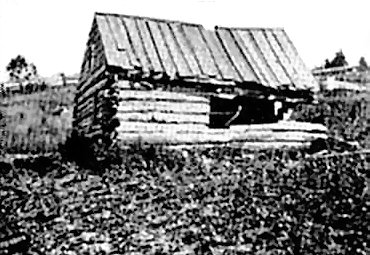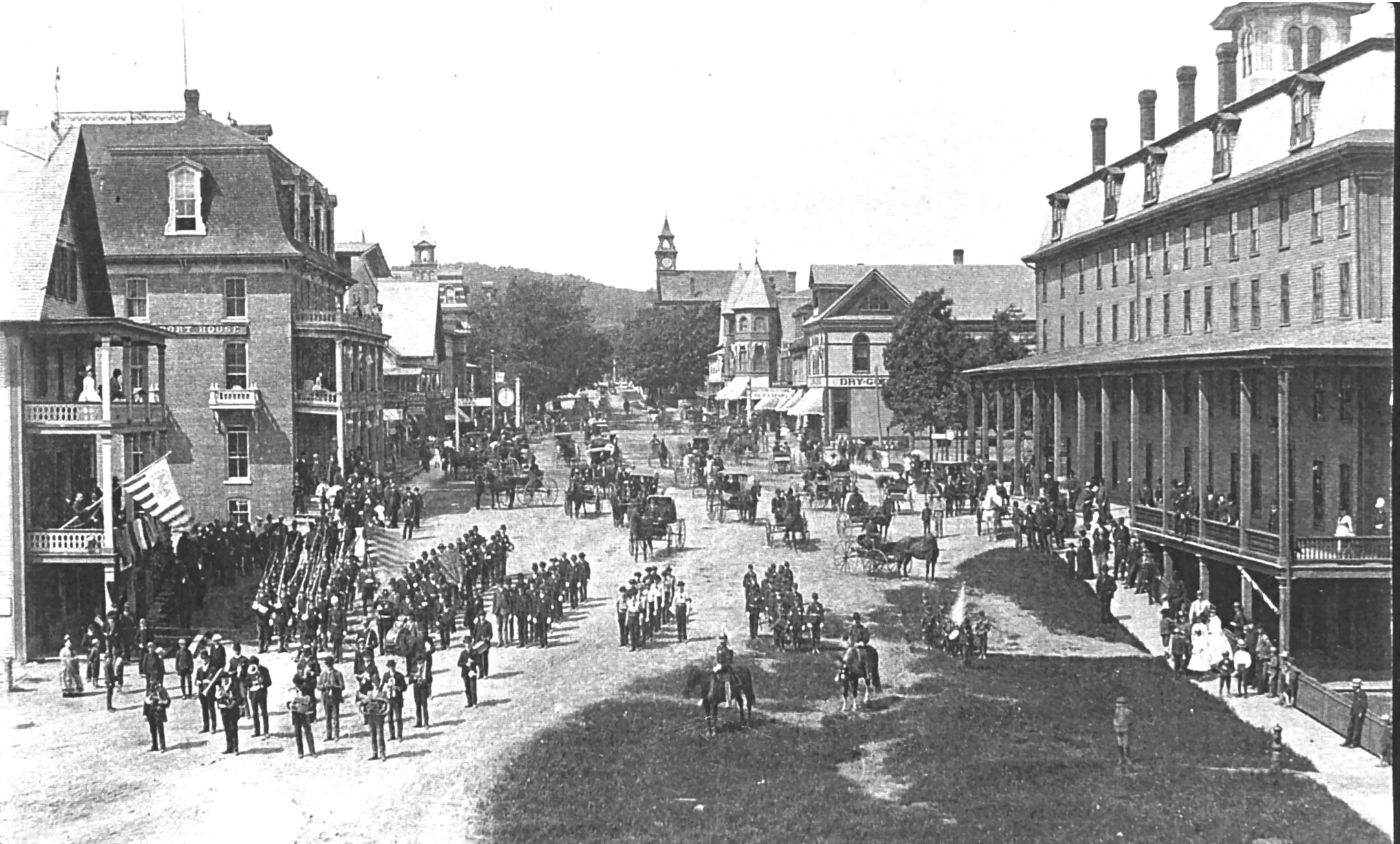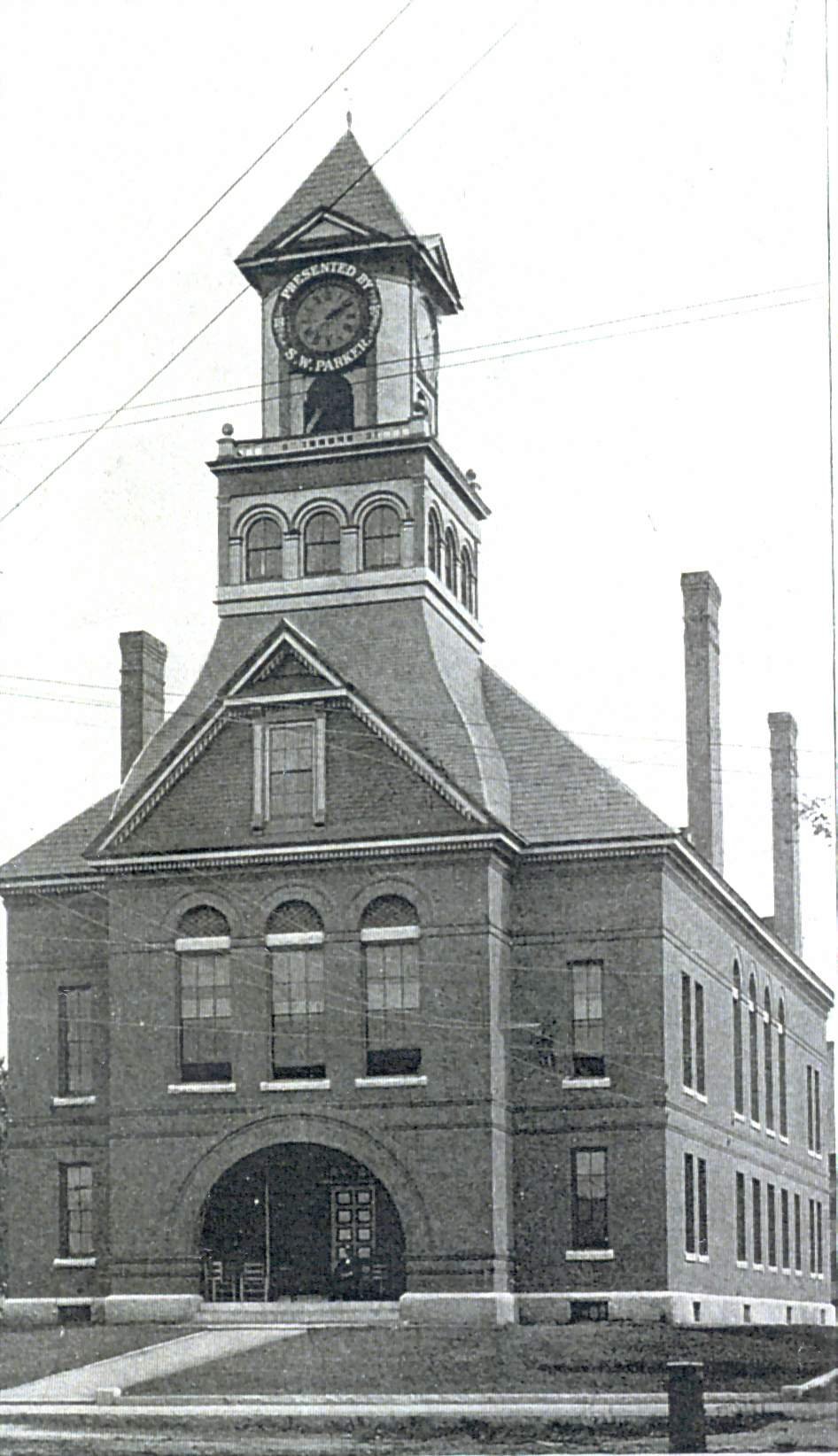Virtual Walking Tour of Newport’s History.
(scroll down through our 10 markers)
Marker 1: Lake Memphremagog’s Earliest Inhabitants
Lake Memphremagog and Newport's earliest inhabitants were the Abenaki Indians, one of the many Algonquian nations. The lake's name is derived from the Abenaki word "Memlabegwok" which translated means "Big Waters". Lake Memphremagog is 32 miles long, with one third of its area in Vermont and the remainder in Canada. Newport served as a crossroads for travel and trade at the heart of the Abenaki homeland. The Memphremagog waterways made it possible to canoe and portage from the St. Lawrence to the Connecticut River and on to the Atlantic or the Great Lakes. It also served as a principal route for the fur trade with colonists and for raiding settlements during the French and Indian War.
Marker 1(p. 2) In 1760, the English and French, after three generations of conflict, signed a peace accord. The Abenaki, who fought on both sides, were left out of the negotiations and became a forgotten people. They found refuge in the Northeast Kingdom, which remained unsettled until after the American Revolution, when Newport opened up to Euro-American settlement.
The Abenaki continued to reside in the area. They moved around in small family bands and lived on the fringes of settlements. Thus, historians eventually assumed they disappeared. Many were assimilated and intermarried with Euro-Americans, or relocated to remote areas within the Memphremagog watershed. Today, the Alnôbak Wabanakiak, descendants of the earliest inhabitants, are working toward reclamation of their cultural heritage.
Marker 2: Newport was first organized as a town on October 26, 1781, though its charter was not issued until October 30, 1802, when it was granted to Nathan Fish and George Duncan under the name Duncansboro. It was not until November 16, 1816 when a small part of Coventry and Salem were annexed to the territory, that the town changed its name from Duncansboro to Newport. The earliest settlement of Duncansboro, took place in 1793. Two brothers, Deacon Martin and Calendar Adams, along with their wives, blazed a trail from St. Johnsbury to the Barton River at which point they canoed to the lake. By 1800, there were 11 families in town; it was this early settlement that would eventually become of the incorporated village of Newport. Newport would not hold its first official town meeting until April 30, 1864.
During the early 1800's downtown Newport was known as "Pickerel Point",consisting of a dense, swampy wilderness of pine trees and stumps. In 1820 Captain John Sias of Derby purchased the Point for $250. After clearing the land, eight years later, he sold it to his son-in-law, George W. Smith, who with his wife, Sally Sias, built a log home on the future site of the Memphremagog House.
Two views of “The Lady of the Lake
Marker 3: Tour Boats on the Lake.
For both the original Native Americans and the earliest settlers, Lake Memphremagog was important for transportation and portage, but it also would develop an illustrious history as a tourist destination. Once fronted by the grand Memphremagog House hotel, the tour boats that traveled the waters of the lake were popular with hotel guests and locals alike.
Newport's first important tour boat, the Mountain Maid, was a 105-foot wooden paddlewheel steamer, launched from Georgeville, Que. in 1849. The owner and Captain of the Mountain Maid was George Washington Fogg, known on the lake as the "Father of Commercial Navigation." A poetic orator, Uriah Jewett, known as "Uncle Ri" Jewett, would often entertain the passengers with his stories of a "sea serpent" that resided in Lake Memphremagog, known today as "Memphre". There have been many reported sightings of this serpent through the years.
In the autumn of 1867, with much fanfare, the world-class Lady of the Lake plied the international waters with the Mountain Maid I and II (1849-1892). Built on the Clyde River in Scotland at a cost of $60,000, she was a handsomely appointed 152-foot, steel-hulled, side paddlewheel steamer and was the largest boat on the lake to date. The graceful Lady of the Lake made two, four-hour tours a day along with the Anthemis. She sailed during Newport's "Splendid Years", and her image has been incorporated into the City's seal.
The Anthemis, meaning “The Goddess of Steam”, a 100-foot steamer capable of carrying 250 people, operated on the lake from 1917 - 1947. She was the last wood-burning steamer on the lake. This Canadian-owned steamer, based in Georgeville, stopped at any wharf that raised a flag indicating waiting passengers.
Marker 4: The Arrival of the Railroad
The City of Newport's development was dramatically altered by the arrival of the railroad in the mid-nineteenth century. From the south, in 1863, the Connecticut and Passumpsic Railroad arrived in Newport. In 1873, a second line, the Missisquoi and Clyde Rivers Railroad Company (also known as the "Southeastern") connected Newport with Richford to the west. By 1887, a chain of railroads from Vermont's southern border followed the Connecticut River and connected with others in Newport to form part of the Boston and Maine Railroad.
The railroad supported both of Newport's primary industries: lumber and tourism. The large lumberyards and dressing mills in the area profited greatly from the increased transport possibilities, allowing lumber to be shipped throughout the country. Tourism, while firmly established before the railroad, flourished with its arrival. Residents of the growing industrial centers flocked to Newport by rail for healthful vacations or en route to other destinations. Hotels located along the lakefront and on Main Street housed these visitors and travelers. While the railroad brought many travelers to Newport, it also was a bit detrimental to the city's tourism as visitors would complain about noise and soot generated by the trains.
The Memphremagog House
Marker 5: Newport’s Hotels and Tourism
The grand Memphremagog House, c. 1838-1907, the core of which was one of the original buildings constructed on Main Street, dominated the hotel business in Newport. Though a few other smaller hotels were also built downtown, near the railroad station and the wharf. The Memphremagog House, built in six stages, housed the post office during the mid-1800's, and later various shops and offices, including the National Bank of Newport. The Lake House, built parallel to the railroad bridge in 1865, was the first constructed after the arrival of the railroad. In 1903, The Raymond House, a four-story hotel, replaced The Lake House. In 1873, the Bellevue House, a three-story hotel, was built directly across from the Memphremagog House and in 1878 was renamed the Newport House. It was considered an excellent public house by traveling men. The Hurst Hotel and Restaurant, a smaller hotel, was located next to the railroad tracks and was popular with the railroad workers. Unfortunately, none of these establishments remain standing.
The Lane Opera House
Marker 6: The Lane Opera House
In 1892, a prominent citizen of Newport, Elisha Lane, commenced construction of the Lane Opera House. The opera house was a three-story brick building with a solid granite foundation and decorative granite window and door trim. The more expensive building materials set it apart from the majority of wood buildings on the street. At a cost of $30,000, the Lane Opera House was a formidable structure for its time. When both the grand Memphremagog House and the Lane Opera House dominated the east end near the railroad depot, Main Street was truly at the height of splendor.
The opera house housed many functions, E. Lane and Son, a large general store owned by Elisha, opened on the first floor in the building on January 10, 1893. Offices, tailors, insurance companies and photographers, including H. Richardson, whose invaluable collection is represented here, occupied the second floor. The opera house itself was located on the third floor. The hall was designed to seat 800, with folding chairs, an inclined floor and a balcony. Traveling companies visited the theater, playing to local residents as well as the guests of Newport's hotels. By 1913, the opera house added "Edison's Genuine Talking Moving Pictures" to the bill. The Lane Opera House also proved important as a civic arena, when on March 5, 1918, the first annual meeting of the newly-incorporated City of Newport was held. Despite its strong imposing appearance, the Lane Opera House fell victim to a fire in 1923 and was destroyed.
Main Street
Marker 7: the Hebard Building site history
The Emory A. Hebard State Office Building, located on Lane Avenue and Main Street, was constructed on the site of some of Newport's earliest establishments. The east end of Main Street, the first street built in Newport, was home to many of the first buildings in the city. In 1820, Lane Avenue was the first street built off of Main. Originally called Wharf Street, Lane Avenue ended at the wharf of Newport's first major tour boat, the Mountain Maid. It surrounded a U-shaped park of the Memphremagog House looping back onto Main Street. By the 1850's, Main Street extended west from the bridge to the current site of the Federal Building, at which point the street ended and the road headed south. In the mid-1800's, the north side of Main Street consisted only of the grand Memphermagog House and a few stores. In 1863, the Gilman Clothing Store opened with a large salesroom that displayed ready-made clothing, men's furnishings and luggage. In 1888, next to Gilman's store, the Lane and Davis store was built. Lane and Davis sold clothing and dry goods on the first floor, with the Masonic Hall on the second floor. Note: the first Masonic Lodge in Newport opened on 01-02-1865 on the third floor of this Gilman Block. By the end of the 20th century, many of these original buildings were gone or had been radically altered.
Marker 8: Newport’s Splendid Years
From the mid-1800's until around 1930, Newport experienced what can only be called its "Splendid Years". Profitable businesses, a bustling Main Street and a continuing tourist industry all pointed towards continued growth. The streets were newly-lit and by 1917, parts of Main Street were paved. Main Street was lined with shops and businesses from the Memphremagog House, before it burned in 1907, to the Goodrich Library. The park associated with the hotel featured a bandstand and was a popular gathering place. Traveling performers would put on shows and give lectures in the park, providing news and entertainment before the days of talking pictures.
The C. F. Bigelow Drug Store, formerly Hall's Drug Store (founded in 1869 by James R. Hall) stood just west of the Emory A. Hebard State Office Building. True and Blanchard, Newport's leading hardware store, was also an important business located on the north side of Main Street. True and Blanchard furnished the supplies for much of the construction in Newport around the turn of the 20th century. The south side of Main Street was also home to many businesses and offices.
Newport’s Federal Building
Orleans County Courthouse
The Goodrich Memorial Library
Main Street, Newport, 1909
The Lane Opera House is the first brick building on the right.
Marker 9: Early 20th Century Newport
Newport had reached its pinnacle of success at the dawn of the 20th century. When three of Newport's most impressive civic buildings were constructed, the Goodrich Memorial Library, the Orleans County Courthouse and the Federal Building. These buildings symbolized the city's prominent position regionally and in Vermont. The Goodrich Memorial Library opened on September 1, 1899 with an inventory of 6,500 books and had both electricity and running water. The Orleans County Courthouse was constructed in 1886 and was constructed of all local materials. The Federal Building, c.1904, housed federal offices, the U.S. Post Office, and the federal courthouse. All three buildings remain standing and are largely unchanged.
Perhaps the greatest impact on Newport in the early 1900's was the invention of the automobile and its rising popularity. Buildings adapted to the new invention, and hotels began converting their liveries and stables into automobile garages. Main Street itself was spruced up in 1917 when the dirt road was paved to better handle the new form of transportation. By 1930, over 4,000 motor vehicles traveled Main Street each day during the summer months as Newport remained a popular resort destination.
Marker 10: Newport’s Fire Fighters
The Memphremagog Hose Company, organized in 1885, was the first fire station of the Newport Village Fire Department. Two separate fire departments, the Memphremagog Hose Company (which included the former Batesville Company) and the West Derby Fire Department joined together to protect the new city in the late 19th century. The Batesville Company was one of the earliest fire-fighting units in the Newport area, created and sponsored by the Frost Veneer Company to protect its mill. Its one-story red firehouse was located on mill property, and most likely the first firefighters were millworkers. The West Derby Hose Company, at the end of Spring Street, was created at the end of the 19th century.
In 1918, the Memphremagog Hose Company reorganized under the new city charter, changing its name to the Newport Fire Department. In 1920, the Newport Fire Department acquired its first piece of motorized equipment, an Oldsmobile "Combination Chemical and Hose Truck." In 1925, a new fire station (Central Fire Station) was erected at the end of Field Avenue; this was the site of the Newport Fire Station for over 60 years, until it was taken down in 1998. City voters in 1996 decided to sell the fire station on Field Avenue to the State of Vermont in order to give Newport the funds needed to build a new, large fire station completed in 1998 on Clyde Street near the Interstate highway.
























